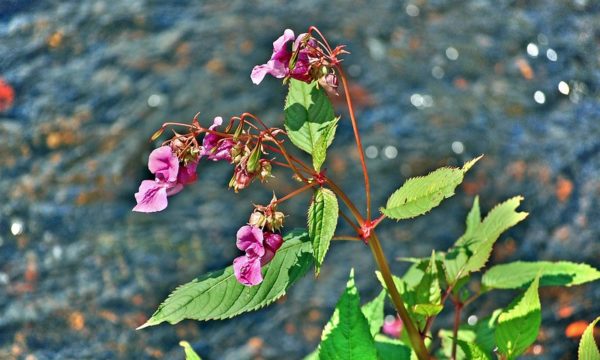A report, written by CABI for the Scottish government, Defra and the Welsh Assembly Government, estimates the cost of invasive non-native species to Great Britain in unprecedented detail. Invasive non-native species can have wide-ranging effects on biodiversity, crop production and people’s livelihoods. A better understanding of the negative impacts of invasive species will help to make people aware of invasive non-native species, to prevent new introductions and to deal with the problems caused by established invasive species.
A team of CABI scientists searched the literature, sent out a questionnaire and interviewed over 250 experts, policy makers, landowners and managers to gather information about the economic cost of invasive species on eleven sectors of the economies of England, Scotland and Wales. The cost calculations were anonymously reviewed by over 30 selected experts from the sectors.
According to the report, non-native invasive species cost the British economy ca. £1.7 Bn per year. The cost is broken down as £1.29 Bn to England, £0.25 Bn to Scotland and £0.13 Bn to Wales.
The costs vary widely among the eleven sectors, but most costs are incurred by the agricultural and horticultural sector. Plants, mammals and plant pathogens are the organism groups that cause the largest costs. On a species level, rabbit (Oryctolagus cuniculus) and Japanese knotweed (Fallopia japonica) cause most costs, followed by brown rat (Rattus norvegicus).
Costs of goods or services that do not have a market value, such as biodiversity, are notoriously difficult to estimate, although they compose the largest part of the costs. This was confirmed by the questionnaire results and interviews with experts: although most respondents worked in the conservation sector and were aware of the negative impacts of invasive species on native species, they often were unable to put monetary value on this impact. A comparison of previous studies indicates that such non-market costs can be more than 50 times higher than market costs and this report may underestimate the ‘true’ cost of invasive species.
Using five example species, the report provides an estimate of the evolution of eradication costs as an invasion progresses, which illustrates that intervention to eradicate species early in the invasion is far less costly than eradication of a widely established species. For example, it estimated that the early eradication of water primrose (Ludwigia sp.) will cost £73,000, compared to the £242 million that it might cost if the plant was to become fully established as it has on the continent in countries like France and Belgium.
The report can be downloaded here.
Reference: F. Williams, R. Eschen, A. Harris, D. Djeddour, C. Pratt, R.S. Shaw, S. Varia, J. Lamontagne-Godwin, S.E. Thomas, S.T. Murphy 2010. The Economic Cost of Invasive Non-Native Species to the British Economy. CABI, Wallingford, 198 pp.
1 Comment
Leave a Reply
Related News & Blogs
Ruffling parrot’s feathers: the biological control of Myriophyllum aquaticum
The emergent stems of parrot’s feather, Myriophyllum aquaticum. (CABI) Myriophyllum aquaticum, commonly known as parrot’s feather, is an invasive aquatic weed. It can have roots underwater in depths of up to 1.5 metres with shoots that appear 20-50cm a…
30 May 2022






[…] pennywort was added to section 14, schedule 9 of the UK’s Wildlife and Countryside Act 1981. A recent report estimates its cost to Great Britain’s economy as £25.5 million each year through management, disposal, flooding and indirect costs to boating and angling. News that from […]